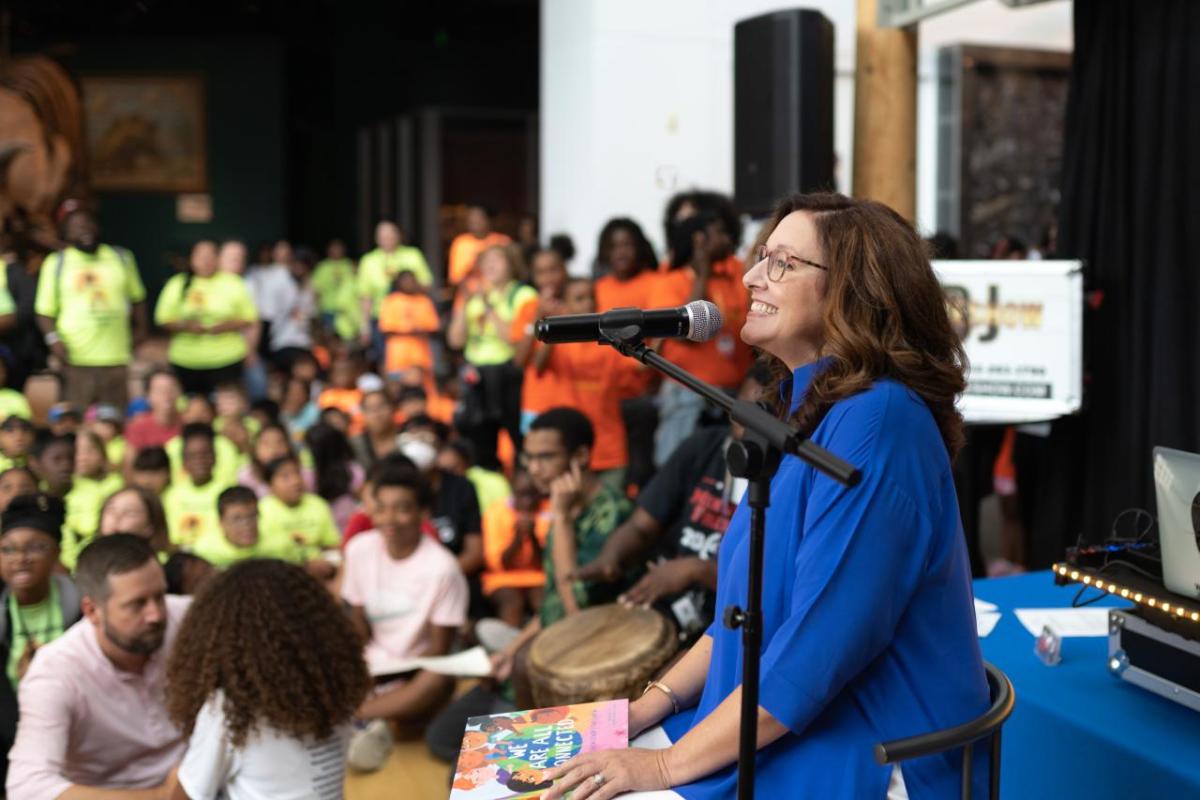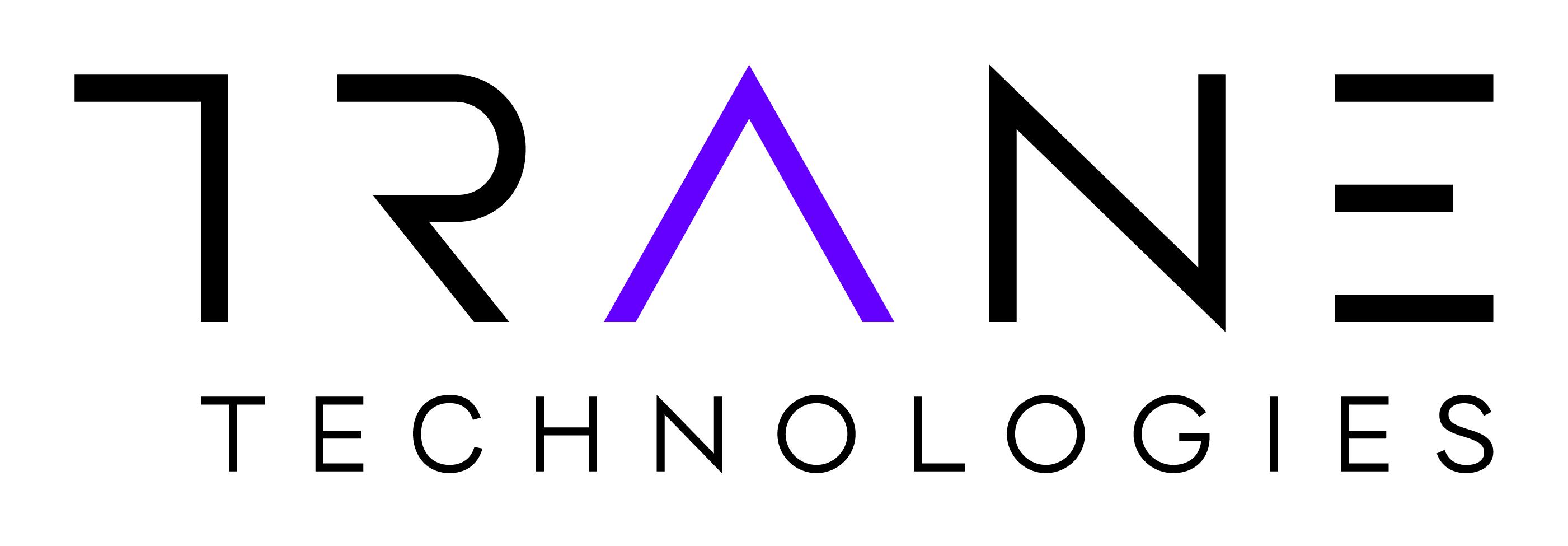Educating Everyone: The Power of Storytelling To Build a Net-Zero Future
This article is authored by Carrie Ruddy, Senior Vice President and Chief Communications & Marketing Officer, Trane Technologies

Research shows when we hear a story, the activity in our brains mirrors the activity in the brain of the storyteller—a phenomenon known as “neural coupling.” Neuroscientists have found that “the greater the anticipatory speaker-listener coupling, the greater the understanding.” Stories quite literally get us on the same wavelength, increasing connection and understanding.
Our chair and CEO Dave Regnery regularly rallies us around the idea that one company can change an industry, and one industry can change the world. As chief communications and marketing officer, my team’s job is to make that idea tangible – through really good stories.
And because we’re talking about sustainability, transparency is imperative. Our challenge is to find a way to weave rigorous, framework-aligned, third-party assured data through our story in a way that prizes its accuracy and increases its relevance for all our audiences.
Credibility is our currency. The reason we get to tell this story is because we know it’s true.
Educating our team
We want to help employees, customers, investors, partners, policymakers and community leaders understand climate change and technology so we can take action together.
This begins with education. And we start with ourselves.
Andrew Winston, member of the Trane Technologies’ Advisory Council on Sustainability and co-author of Net Positive with Paul Polman, is focusing more on education and upskilling in his advisory work. Andrew cites “growing awareness that people need real fluency in sustainability in general and climate in particular.”
Offered through our learning management system, customized training modules are designed to grow our employees’ baseline understanding of the greenhouse gas effect, carbon intensity of the electric grid and carbon neutrality.
This fall, we’re launching a new curriculum to help employees understand exactly how their specific role contributes to our sustainability goals. In our performance plans, every single one of us has a sustainability goal that maps directly to one of our 2030 Sustainability Commitments.
I believe if we can equip our workforce with a real understanding of their impact, then our capacity for good grows by magnitudes.
Educating the market
Fifteen percent of global greenhouse gas emissions come from heating and cooling buildings and another 10% from food loss and waste. The great news is that technology exists today to significantly decarbonize the infrastructure we depend on.
Why is this technology not being scaled faster? Because we need to educate the market about what’s possible.
As a marketing and communications team, we’re doing that through content that breaks down sustainability and climate terminology and storytelling that elevates the voices of experts and the stories of our customers.
- When it comes to sustainability terminology, we’re careful to use definitions approved by trusted third parties, like the UN Net-Zero Coalition, CDP and the U.S. Green Building Council. We’ve built a series of YouTube shorts to help others understand this vocabulary, too. Sustainability Simplified includes videos on net-zero, decarbonization and carbon neutrality with more in the pipeline.
- Heat pumps can help play a major role in decarbonizing the built environment, but there is a lack of knowledge in the market about this technology. So we created this Five Cool Facts about Heat Pumps infographic to debunk myths. For example, did you know that if every home in the U.S. adopted heat pumps it would be like taking 32 million gas-powered cars off the road?
- We’re curating crucial conversations through our Healthy Spaces podcast, where we’re exploring the connection between human and planetary health. We talk with scientists, entrepreneurs and climate activists about how technology and innovation are transforming the spaces where we live, work and play.
- Our customers are the real heroes—taking action to decarbonize their operations, and we’re sharing their stories on our blog and through in-person experiences at special events like Climate Week NYC.
Building toward a net-zero future begins with understanding what it means. Education is an important way to take action.
Educating the future
To meet our sustainability goals, we recognize the need for a diverse and well-prepared workforce. Armed with a commitment to work differently, we've established the Trane Technician Apprenticeship program, a four-year, paid training program that helps remove barriers to great career opportunities. This program, aimed at cultivating early career talent, offers comprehensive on-the-job education and holds national accreditation in partnership with the U.S. Department of Labor.
We are equally dedicated to educating the individuals who will not only carry forward our current efforts - but also have the power to positively transform them. Under our Sustainable Futures citizenship strategy, we've pledged 500,000 employee volunteer hours and $100 million by 2030 to support underrepresented communities of learners and future leaders. This funding will empower students to explore STEM career opportunities, offering enriched learning environments and sustainability-focused curricula.
This summer I had the opportunity to join our corporate citizenship team at Youth Science Day at the Science Museum of Minnesota. More than 1,500 kids gathered for STEM demonstrations and hands-on learning experiences, and I had the chance to read a story to the whole group. It was a really powerful moment. I was reminded of the power of storytelling, why we do what we do—and who we’re doing it for.
Education, a path toward common good
The best writers are avid readers, and my team reads a lot. We consume business and industry news, we review studies from NGO partners and government agencies, and we monitor online conversation about sustainability and climate technology. After this record-breaking summer, there is a lot of doom and gloom out there.
But as sustainability communicators, we can’t afford to become paralyzed by climate anxiety or overwhelmed by the magnitude of our challenge. We have a really important story to tell. Our job is to continue to find new ways to tell it with transparency, clarity and—most of all—optimism.

